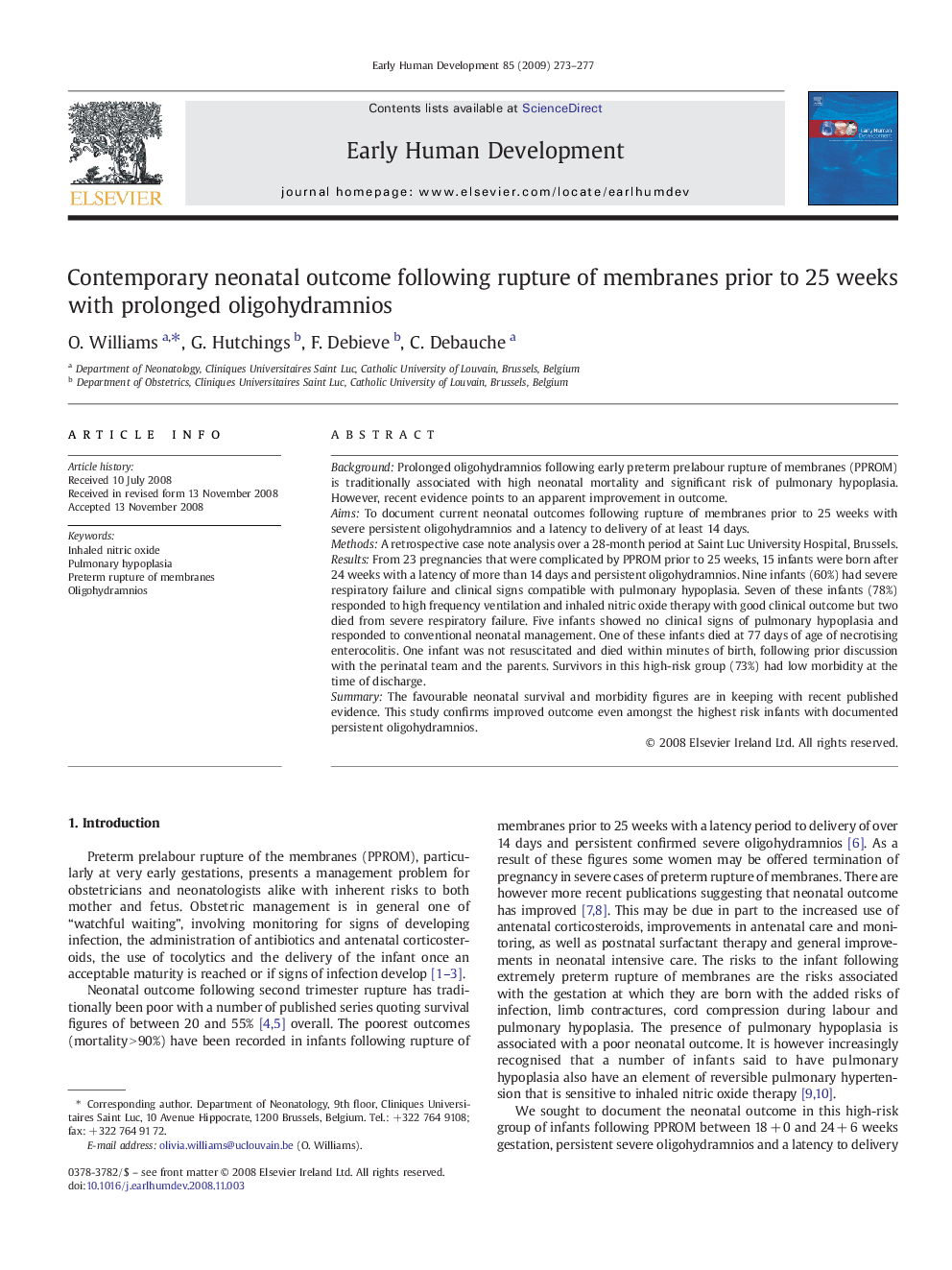| Article ID | Journal | Published Year | Pages | File Type |
|---|---|---|---|---|
| 6172270 | Early Human Development | 2009 | 5 Pages |
BackgroundProlonged oligohydramnios following early preterm prelabour rupture of membranes (PPROM) is traditionally associated with high neonatal mortality and significant risk of pulmonary hypoplasia. However, recent evidence points to an apparent improvement in outcome.AimsTo document current neonatal outcomes following rupture of membranes prior to 25Â weeks with severe persistent oligohydramnios and a latency to delivery of at least 14Â days.MethodsA retrospective case note analysis over a 28-month period at Saint Luc University Hospital, Brussels.ResultsFrom 23 pregnancies that were complicated by PPROM prior to 25Â weeks, 15 infants were born after 24Â weeks with a latency of more than 14Â days and persistent oligohydramnios. Nine infants (60%) had severe respiratory failure and clinical signs compatible with pulmonary hypoplasia. Seven of these infants (78%) responded to high frequency ventilation and inhaled nitric oxide therapy with good clinical outcome but two died from severe respiratory failure. Five infants showed no clinical signs of pulmonary hypoplasia and responded to conventional neonatal management. One of these infants died at 77Â days of age of necrotising enterocolitis. One infant was not resuscitated and died within minutes of birth, following prior discussion with the perinatal team and the parents. Survivors in this high-risk group (73%) had low morbidity at the time of discharge.SummaryThe favourable neonatal survival and morbidity figures are in keeping with recent published evidence. This study confirms improved outcome even amongst the highest risk infants with documented persistent oligohydramnios.
